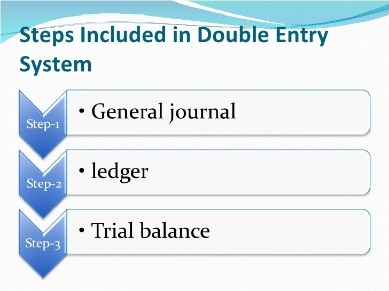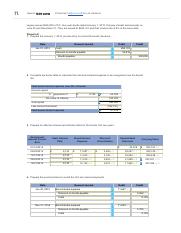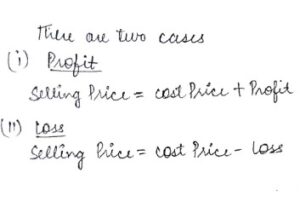As you can see, by the sixth month, the account that compounded monthly already lagged behind the account that had the 1% better interest rate. Howev

As you can see, by the sixth month, the account that compounded monthly already lagged behind the account that had the 1% better interest rate. However, with a small enough difference in interest rate and enough time to compound, accounting for joint ventures a faster compounding schedule can come out ahead. For example, if you had 5 years and $12,000, investing it at a 5% APR with monthly compounding would make you $12 richer than investing it at a 5.1% APR with annual compounding.
Investment details
If you are investing your money, rather than saving it in fixed rate accounts,the reality is that returns on investments will vary year on year due to fluctuations caused by economic factors. Assuming that the same 5% APY is applied to your new balance, you’d end up with $1,105 after the second year. Interest can be compounded on any given frequency schedule, from continuous to daily, monthly, quarterly to annually. When calculating compound interest, the number of compounding periods makes a significant difference for future earnings. You should always consult a qualified professional when making important financial decisions and long-term agreements, such as long-term bank deposits. Use the information provided by the software critically and at your own risk.
Advanced Stock Screeners and Research Tools
Whether for personal savings, retirement planning, or educational investments, this calculator offers the foresight needed to make informed financial decisions. With compound interest, you earn interest not only on your deposit, or principal, but also on the interest it earns. As your interest keeps earning interest, the longer you save, the steeper the growth curve becomes, which is often referred to as the magic of compound interest. The longer your savings are on deposit, the more powerful this compounding becomes. Regularly withdrawing money from your savings account will lower your balance and how much interest you earn each month. As shown by the examples, the shorter the compounding frequency, the higher the interest earned.

Understanding the Basic Compound Interest Formula
Now that you know the compound interest formula let’s use it to calculate compound interest. Say you’ve invested ₹5,00,000 in a Fixed Deposit that compounds interest quarterly. At year five the gap in return is https://www.quick-bookkeeping.net/understanding-your-tax-forms/ more than $2,500 while at year ten it is over $15,000 on that same $10,000 initial investment. For a deeper exploration of the topic, consider reading our article on how compounding works with investments.

This compound interest equation above will show the future value of an investment or loan, which is the initial principal amount, plus compound interest. The primary benefit of compound interest is that you can earn interest on the money you never invested, allowing your investments to grow quicker than they could without it. Where I is the effective interest rate and the rest of the notation is as above. These formulas can be spun accordingly to solve for principal and time.
- Financial experts have thoroughly vetted it to ensure it meets the practical needs of both individual investors and financial professionals.
- You just have to enter principal, interest, tenure, and compounding frequency to calculate compound interest.
- Assuming you added no more money into the account, you’ll do slightly better holding a bond that accrues compound interest after just one year.
- Whether for personal savings, retirement planning, or educational investments, this calculator offers the foresight needed to make informed financial decisions.
- This approach is how tax payments would work on savings stored inside a tax deferred retirement account.
With savings accounts, compound interest works by continually adding interest you earn to the funds you’ve deposited. Different banks add—or compound—interest at different rates, known as the compounding frequency. This compound interest calculator is a tool to help you estimate how much money you will earn on your deposit.
For example, if you have a $5,000 loan with 5% annual percentage rate (5%), you would be charged 5% of the principal balance for every month you have the loan. In the first month, your interest payment would be approximately $21. As you pay down the principal, the interest would go down because the principal would be lower. For a simple interest loan, the interest payment will remain the same, no matter the principal balance. If you’re buying a bond, this will be the par value (or face value) of the bond (such as $5,000).
As impressive an effect as compound interest has on savings goals, true progress also depends on making steady contributions. Let’s go back to the savings account example above and use the daily https://www.personal-accounting.org/ compound interest calculator to see the impact of regular contributions. To demonstrate the effect of compounding, let’s take a look at an example chart of an initial $1,000 investment.
CNET editors independently choose every product and service we cover. Though we can’t review every available financial company or offer, we strive to make comprehensive, rigorous comparisons in order to highlight the best of them. The compensation we receive may impact how products and links appear on our site. When we understand compound interest, we can make better decisions about where to put our money. Liliana Hall is a writer for CNET Money covering banking, credit cards and mortgages. Previously, she wrote about personal credit for Bankrate and CreditCards.com.
You can also use the built-in Excel function called the Future Value function to calculate compound interest. Future Value is a financial term representing the amount your principal will grow into over a specific time period. The power of compounding has been said to be phenomenal by the likes of Warren Buffet. What’s important though, is to realise that the power of compounding works in your favour when you earn compound interest, but not when you’re the one paying it.

COMMENTS